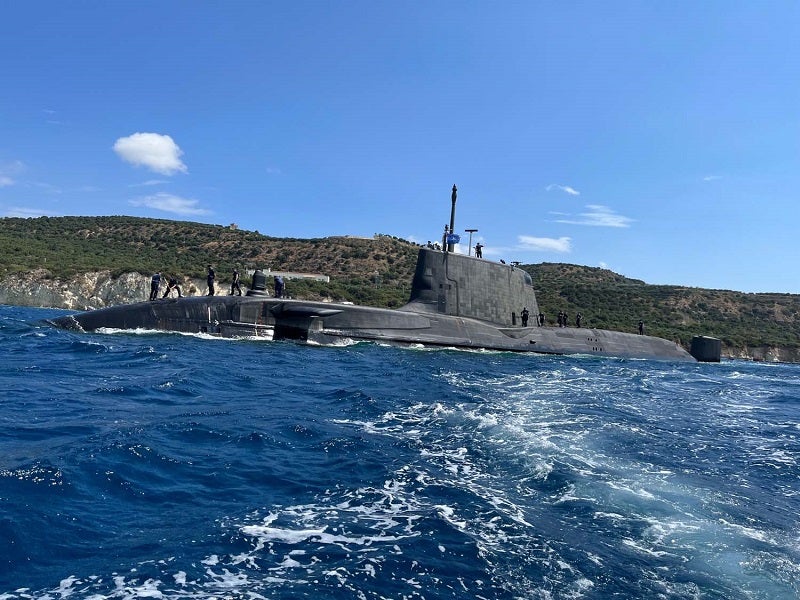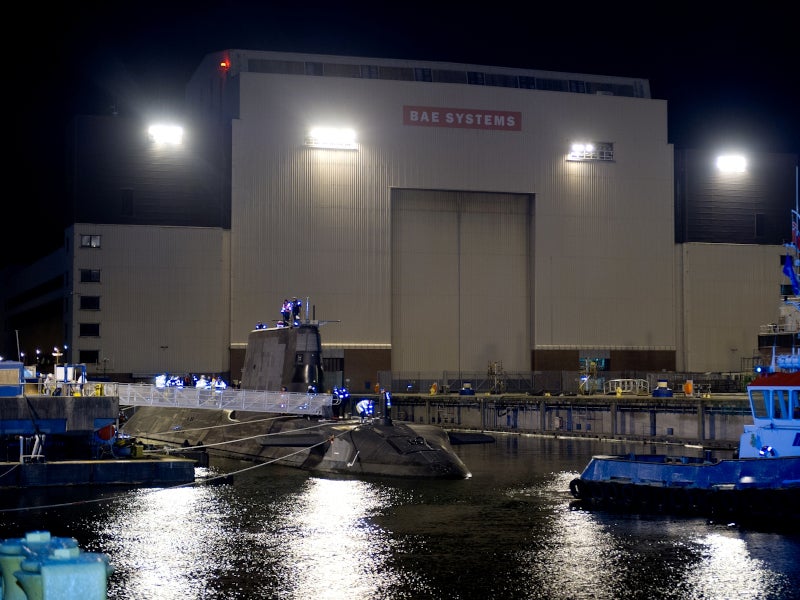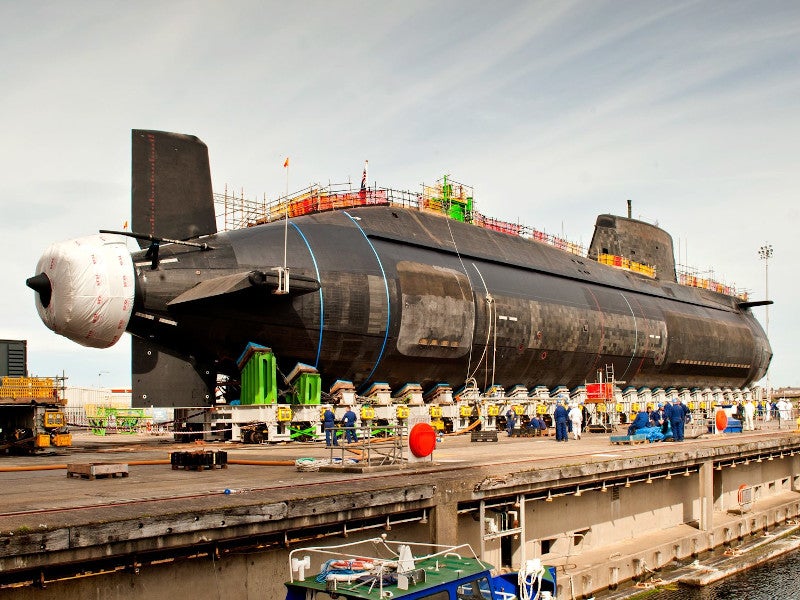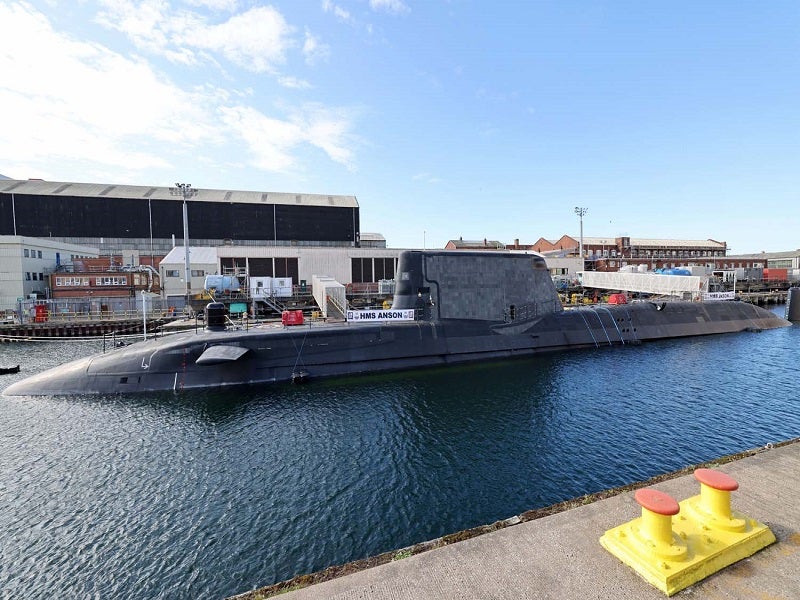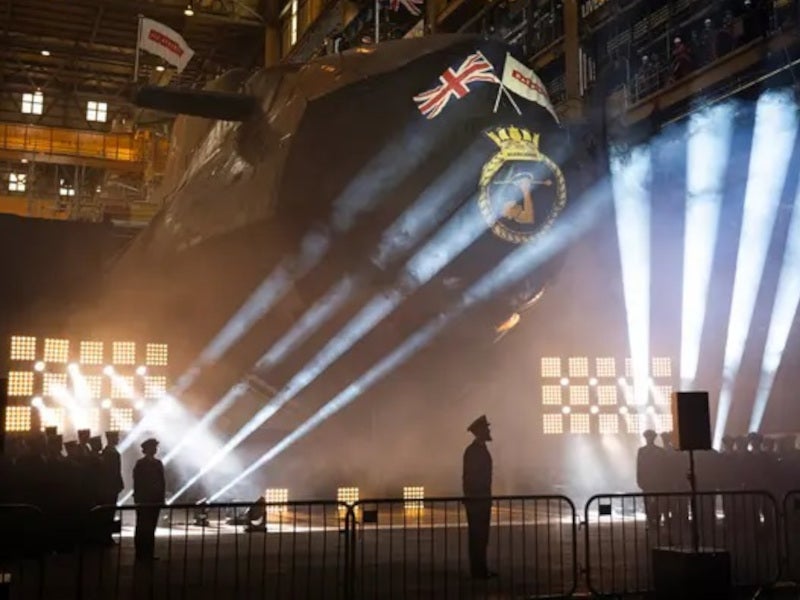The Royal Navy’s Astute class is a family of nuclear-powered attack submarines designed to replace the Trafalgar-class nuclear submarines.
The initial order quantity was three, but the UK Ministry of Defence (MOD) later ordered an additional four vessels, bringing the total number of Astute-class submarines to seven. HM Naval Base Clyde in Faslane, Scotland, serves as the home base for the Astute-class submarines.
The performance specifications of the Astute class are an enhancement of the Trafalgar-class batch one fleet, which is part of the Royal Navy’s Second Submarine Squadron, based at Devonport.
The Royal Navy has decommissioned six of the seven Trafalgar-class submarines, starting with HMS Trafalgar in December 2009. The fifth and sixth submarines in the class were decommissioned in May 2022.
The final Trafalgar-class submarine, HMS Triumph, is still in service. It was due to retire in 2022 but after an additional 18-month extension, is set to remain in service until 2024.
Astute-class submarine design and features
The Astute-class submarines are the first nuclear submarines to be fully designed using a three-dimensional, computer-aided environment.
The submarines are 97m long and weigh 7,400t. They have a maximum operational endurance of 90 days and can reach speeds of up to 29 knots.
Astute-class submarines can hit targets with pinpoint accuracy from up to 1,000km away from the coast.
Both the Trafalgar-class and Astute-class submarines are equipped with the Royal Navy’s Eddystone Communications-band Electronic Support Measures (CESM) system.
The Eddystone system was developed by DML, a part of Babcock, and Boeing subsidiary Argon ST. It provides advanced communications, signal intercept, recognition, direction-finding, and monitoring capabilities. Sea trials of the system were completed in December 2007.
Royal Navy’s attack submarine development history
BAE Systems is the prime contractor for the project, with the submarines built at the company’s Marine Barrow shipyard. The first three ships in the class are named HMS Astute (S119), HMS Ambush (S120), and HMS Artful (S121).
The fourth submarine was named HMS Audacious (S122) while the fifth Astute-class submarine was named HMS Anson (S123) in September 2011. The sixth and seventh submarines are named HMS Agamemnon (S124) and HMS Agincourt (S125), respectively.
The keel for the first submarine, HMS Astute, was laid in January 2001, and the vessel was launched in June 2007. HMS Astute was commissioned in August 2010.
The keel of HMS Ambush was laid in October 2003. The vessel was launched in December 2010 and made its first voyage in January 2011. The initial dive test of HMS Ambush was completed in September 2011, followed by commissioning in March 2013. The HMS Astute and HMS Ambush submarines were handed over to the Royal Navy in July 2013.
The keel of HMS Artful was laid in March 2005. The submarine was launched in May 2014 and performed its maiden dive in October of the same year. It was inducted into the Royal Navy in March 2016.
In May 2007, the UK MOD awarded BAE Systems a contract to build a fourth Astute-class submarine, HMS Audacious (S122). The keel of HMS Audacious was laid in March 2009.
In December 2012, BAE Systems received a £1.2bn ($1.9bn) contract from the UK MoD for the design, construction, testing and commissioning of HMS Audacious. The submarine was launched in April 2017 and made its first dive in January 2018. It sailed from BAE’s Barrow-in-Furness site to its home base in April 2020.
The fifth and sixth Astute-class submarines, HMS Anson (S123) and HMS Agamemnon (S124), were ordered in March 2010. The keel for HMS Anson was laid in October 2011 while that of HMS Agamemnon was laid in July 2013. HMS Anson was launched in April 2021.
HMS Anson was officially commissioned into the Royal Navy in August 2022.
BAE Systems received another £1.4bn ($1.7bn) contract for the construction of HMS Agamemnon in April 2017, followed by a £1.5bn ($2.03bn) contract for HMS Agincourt in May 2018.
The two submarines are currently under construction, with HMS Agamemnon scheduled for launch later in 2024.
Command and control systems on Astute-class submarines
The Astute combat management system (ACMS), supplied by BAE Systems Insyte (formerly Alenia Marconi Systems), is an evolved version of the submarine command system (SMCS) used on other UK submarine classes.
The ACMS receives data from sonars and other sensors and, using advanced algorithms and data handling, displays this data as real-time images on the command consoles. The operational software received factory acceptance from the Astute Prime Contract Office in July 2002.
The platform management system on board the submarines controls and monitors the on-board systems. It comprised sensors, actuators, remote terminal units, and data processing that provide real-time information and diagnostics.
Astute-class Tomahawk missiles and torpedoes
The Astute-class submarines are equipped with the Tomahawk Block IV (tactical tomahawk) cruise missile from Raytheon, which is fired from 533mm torpedo tubes.
The Tomahawk is equipped with the TERCOM terrain contour mapping-assisted inertial navigation system. The terrain contour mapping for use over land combines onboard radar altimeter measurements with terrain mapping data installed in the missile. Block II introduced digital scene matching area correlation (DSMAC) guidance.
Block III improvements include an enhanced propulsion system and the Navstar global positioning system (GPS) guidance capability. The GPS provides missile location and velocity data for precision targeting.
Tomahawk has a range of up to 1,000 miles (1,609km) and a maximum velocity of 550mph. Block IV includes a two-way satellite link that allows for missile reprogramming mid-flight and the transmission of battle damage indication (BDI) imagery.
Astute has six 533mm torpedo tubes and is equipped with Spearfish torpedoes and mines. It has the capacity for a total of 36 torpedoes and missiles.
The Spearfish torpedo from BAE Systems is wire-guided with an active/passive homing head. Its range is 65km at a speed of 60 knots. Spearfish is fitted with a directed-energy warhead.
Countermeasure technology and sensors
The countermeasures suite includes decoys and electronic support measures (ESM). The ESM system is the Thales Sensors Outfit UAP(4), which features two multifunction antenna arrays mounted on the two non-hull penetrating optronics masts from Thales (formerly Pilkington) Optronics and McTaggart Scott.
The submarines are fitted with I-band navigation radars. The sonar system is the Thales Underwater Systems (formerly Thomson Marconi Sonar) 2076 integrated passive/active search and attack sonar suite, which includes bow, intercept, flank and towed arrays. The Astute class is also fitted with the latest version of the Thales S2076 integrated sonar suite.
Atlas Hydrographic provided the DESO 25 high-precision echosounder, capable of precise depth measurements down to 10,000m, for the Astute-class.
Astute is equipped with two non-hull penetrating CM010 optronic masts developed by Thales Optronics, with McTaggart Scott supplying the masts. The CM010 mast includes thermal imaging, low-light TV and colour CCD TV sensors.
Raytheon Systems was contracted to provide the Successor IFF (identification friend or foe) naval transponder system for the Astute class.
Propulsion and performance of the UK’s nuclear submarines
The nuclear power is provided by the Rolls-Royce PWR 2 pressurised water reactor. The long-life core fitted in the PWR 2 means refuelling will not be necessary for the service life of the submarine.
Other main items of machinery include two Alstom turbines and a single shaft with a Rolls-Royce pump-jet propulsor, which consists of moving rotor blades within a fixed duct.
Additionally, there are two diesel alternators, one emergency drive motor, and one auxiliary retractable propeller. The SSN Astute submarines feature an MTU 600kW diesel generator.
CAE Electronics provided the digital, integrated controls and instrumentation system for steering, diving, depth control and platform management.
The PWR 2 second-generation nuclear reactor was developed for the Vanguard-class Trident submarines. Current generations of PWR would enable submarines to circumnavigate the world approximately 20 times while the latest development of PWR would enable circumnavigation 40 times without refuelling.
The major equipment components in the development of PWR 2 were the reactor pressure vessels from Babcock Energy, main coolant pumps from GEC and Weir, and protection and control instrumentation from Siemens Plessey and Thorn Automation.
Contractors involved
EADS Defence and Security Systems and EADS Hagenuk Marinekommunikation were awarded the contract to provide the external communications systems for the Astute-class submarines in August 2005.
Northrop Grumman Sperry Marine was selected in March 2008 to provide the platform management system for the fourth submarine in the class, HMS Audacious. The company also manufactured the platform management systems for the fifth and sixth submarines in the class.
Northrop will also provide the same systems for the seventh submarine. It received a contract to provide in-service support for the platform management systems of the Astute-class submarines in March 2022.
Babcock was selected to supply its WHLS for the sixth and seventh Astute-class submarines in February 2013.
In April 2017, UK-based law company Burges Salmon was consulted to advise the UK MOD on the contract signed with BAE Systems for the construction of HMS Agamemnon.
In June 2021, James Fisher and Sons subsidiary JFD was appointed to provide equipment-level in-service support, including core and non-core tasks, as well as the provision of spares for the Astute-class submarines. The contract is valid for four years, with an option to extend it by one year.
Strachan and Henshaw, which was acquired by Babcock International Group (Babcock) in 2008, was contracted to provide the weapon handling and launch system (WHLS).
L3Harris provides operator and maintenance training for the Astute-class submarines in partnership with BAE Systems.

